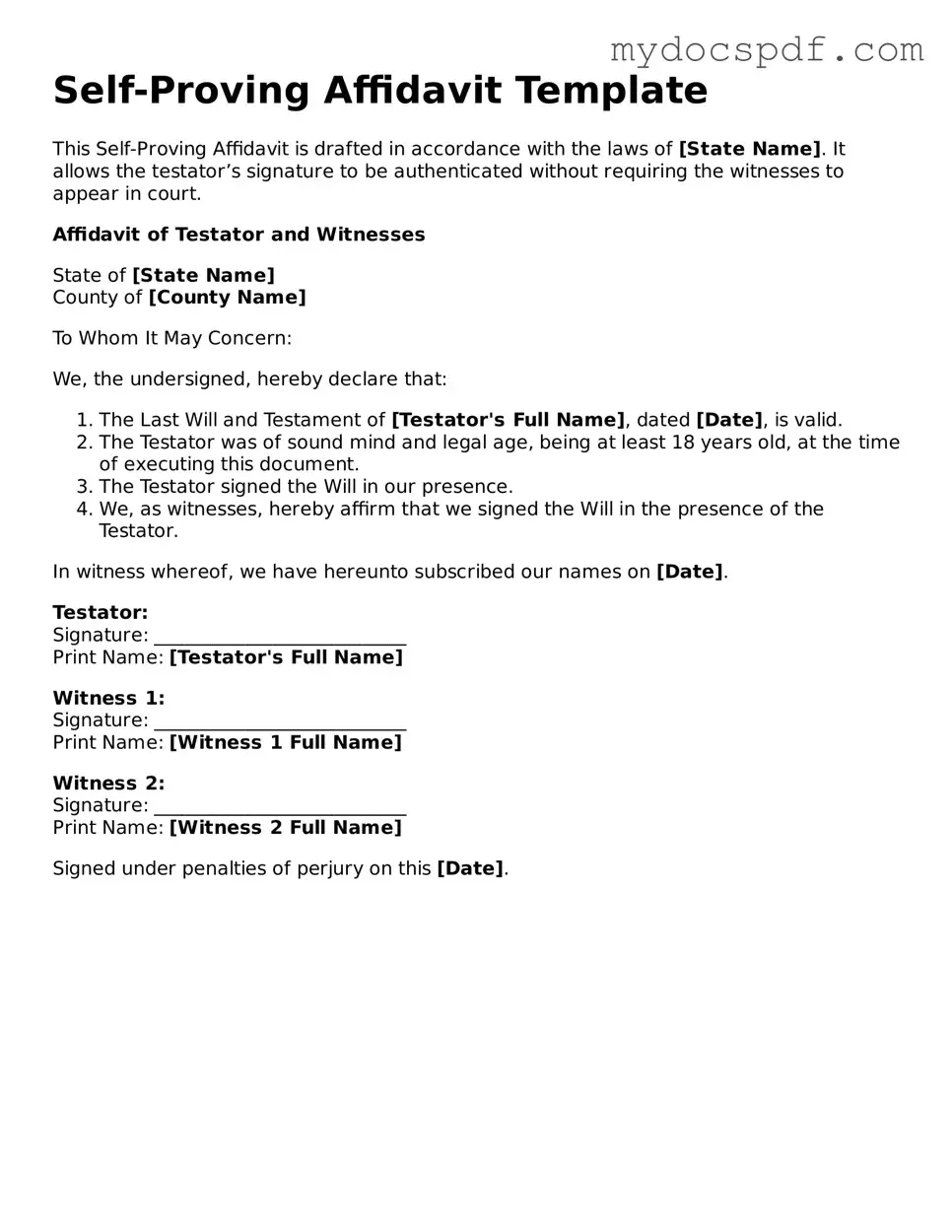Self-Proving Affidavit Template
This Self-Proving Affidavit is drafted in accordance with the laws of [State Name]. It allows the testator’s signature to be authenticated without requiring the witnesses to appear in court.
Affidavit of Testator and Witnesses
State of [State Name]
County of [County Name]
To Whom It May Concern:
We, the undersigned, hereby declare that:
- The Last Will and Testament of [Testator's Full Name], dated [Date], is valid.
- The Testator was of sound mind and legal age, being at least 18 years old, at the time of executing this document.
- The Testator signed the Will in our presence.
- We, as witnesses, hereby affirm that we signed the Will in the presence of the Testator.
In witness whereof, we have hereunto subscribed our names on [Date].
Testator:
Signature: ___________________________
Print Name: [Testator's Full Name]
Witness 1:
Signature: ___________________________
Print Name: [Witness 1 Full Name]
Witness 2:
Signature: ___________________________
Print Name: [Witness 2 Full Name]
Signed under penalties of perjury on this [Date].
